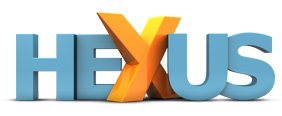Nameless and blameless?
During the course of the pro-WikiLeaks attacks on several multinationals' websites, the group behind them, Anonymous has been portrayed as an anarchic loosely-knit group of hacktivists, but it now appears they are better organised than first thought.
The group has been all over the news of late for bringing down payment sites MasterCard, PayPal and Visa, albeit fleetingly, in protest of the companies' move to not cooperate with WikiLeaks.
However, according to The Guardian, Anonymous' 'Operation Payback' campaign is being driven by ‘a hidden cabal' of around 12 skilled hackers.
Some members of the group, notably Coldblood have been in contact with the newspaper, eager for press coverage and to explain how and why they are attacking specific websites.
One member of Anonymous reportedly admitted there is a ‘command and control' core within the group and they are appointed by invitation only.
"It's to protect people, but if you have proven trustworthy you get invited - it's not hard to do. It's not some elitist structure but a way to keep the press and the odd bit of law enforcement seeing who issues commands," they reportedly added.
It is thought Anonymous has around 1,000 members who use their computers to launch DDoS attacks, but only around 1 percent of the group has the power to decide who gets hit next.
One Anonymous insider told the newspaper: "Our project has no leader structure, only different roles. The degree of leadership and organisation in the various projects various a lot. It's all very chaotic, but we communicate and co-operate with each other. I see us as different cells of the same organism."
It has previously been suggested that many teenagers are involved in Operation Payback as well as the occasional professional hacker. The upper echelons of the group are thought to have control of botnets made up of thousands of PCs used to launch DDoS attacks.
Anonymous has just released a lengthily statement/rant called ‘Free Thinking Citizens of the World,' perhaps in response to its portrayal in the press.
It said: "Many people think they understand Anonymous, but as an amorphous, opt-in entity, Anonymous is ... fractitious at best and anything but unanimous."
"Individuals within Anonymous believe many often contradictory things, even within that same individual. Such is humanity. Humans argue, disagree, fight, bicker, and often say hurtful things specifically to hurt one another. As a group of humans (at least to our knowledge - there may be a few dogs on the internet these days) Anonymous holds many of these human qualities," it added.
Unsurprisingly the release came from an unnamed source but many commentators believe it was penned by a small group of people, despite the content's emphasis on a huge body of people.
"It may then seem odd to try to characterize or explain Anonymous at all. Among this buzzing hive of thoughts, ideas, and dreams, the only common characteristics that one might perceive are only the ideas that hold the most traction among humans at large," it added.
However, despite the group's bold claims, marketing and seeming desire to make the headlines, they are under threat as the UK police is investigating the attacks and the FBI is also reportedly looking into claims that Anonymous is behind the Gawker attack that saw some 1.3m email addresses and passwords of blog readers revealed.













